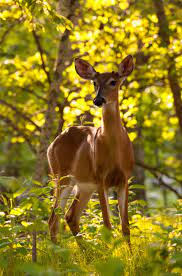In the dense, forested lands of northeastern North Carolina, deer hunting is not just a recreational pastime—it's a deeply ingrained tradition. Yet amongst the various hunting methods, bow hunting stands out for its challenge and promise of an intense, intimate experience with nature. This article delves into the ins and outs of bow hunting for deer in this region, discussing the optimal times for hunting, techniques, processing the deer, and a few savory recipes for the game.
While deer hunting seasons vary from state to state, in North Carolina, the archery season typically opens in September and extends into early October. This early season hunting can be rewarding, as deer are less wary and more patternable. Late October to early November marks the peak of the rut—the breeding season when bucks are most active and less cautious, offering a great opportunity for hunters.
The late bow hunting season usually kicks off in mid-November and extends into December. This is when bucks seek out the last does coming into estrus and can be a productive time. Ensure to consult the most recent North Carolina Wildlife Resources Commission regulations for exact dates and any changes to rules or boundaries.
Bow hunting requires a unique combination of patience, precision, and skill. Here are some strategies to consider:
Understanding deer movement patterns is crucial for bow hunting, which requires closer proximity than rifle hunting. Regular scouting and using trail cameras can help identify food sources, water sources, bedding areas, and trails that deer frequently use.
Tree stands offer a great vantage point for observing deer activity and provide the added benefit of your scent being elevated above ground level. Ground blinds are also useful and can offer better concealment. Whichever method you choose, remember that the key is to blend into your environment and minimize your movement and scent.
Precision is critical in bow hunting. Aiming for the heart and lungs (the vitals) generally ensures a quick, humane kill. Always wait for the deer to present a good angle for a clean shot.
After a successful hunt, it's important to process the deer properly:
Field dressing should be done as soon as possible to ensure the meat doesn't spoil. This involves removing the deer's internal organs, which can harbor bacteria and transfer heat to the meat.
Skin the deer and butcher it into manageable portions. A basic butcher job includes separating the meat into sections: backstraps, tenderloins, front and rear quarters, and the neck. You can further break these down into roasts, steaks, etc., or choose to grind some for burger meat or sausage.
Aging the meat in a controlled environment (34-37°F) for up to two weeks can improve tenderness and flavor by allowing natural enzymes to break down muscle tissue.
Here are a couple of hearty, rustic recipes to enjoy your venison:
Venison Stew
A slow-cooked venison stew is a comforting meal after a long day of hunting. Sear venison chunks, then simmer them with onions, carrots, potatoes, and herbs in a rich broth until tender.
Grilled Backstrap
Marinate the backstrap in olive oil, soy sauce, garlic, rosemary, and black pepper. Grill it over high heat until medium-rare. Slice thinly against the grain for a tender, flavorful treat.
Bow hunting for deer in northeastern North Carolina is a rewarding pursuit that connects you with nature and provides a sustainable food source. Respect for the animal and the land, understanding deer behavior, mastering your equipment, and refining your hunting strategies will ensure the best possible outcomes from your hunting experiences.















0 comments:
Post a Comment